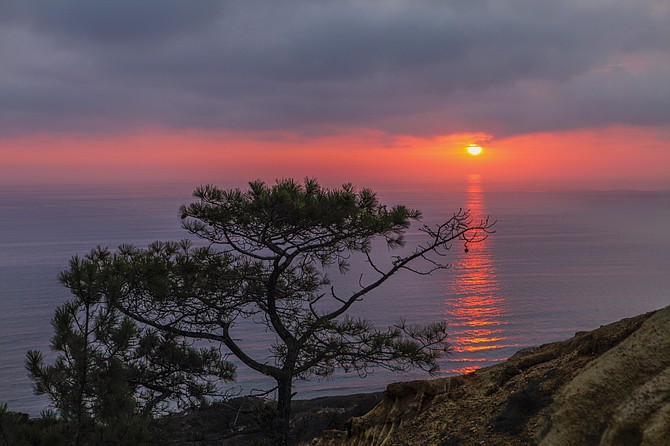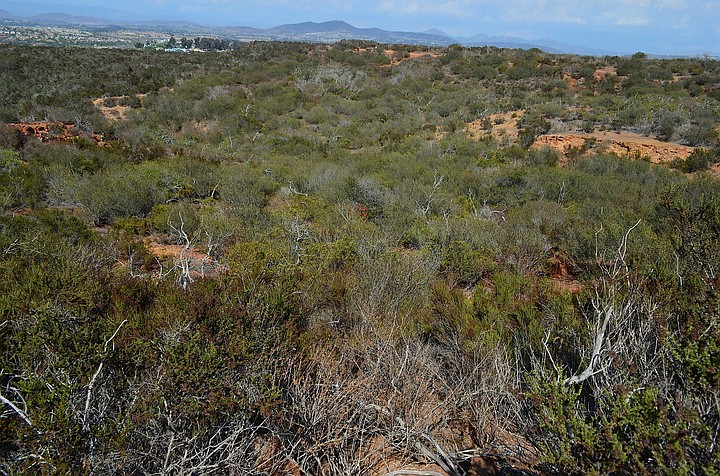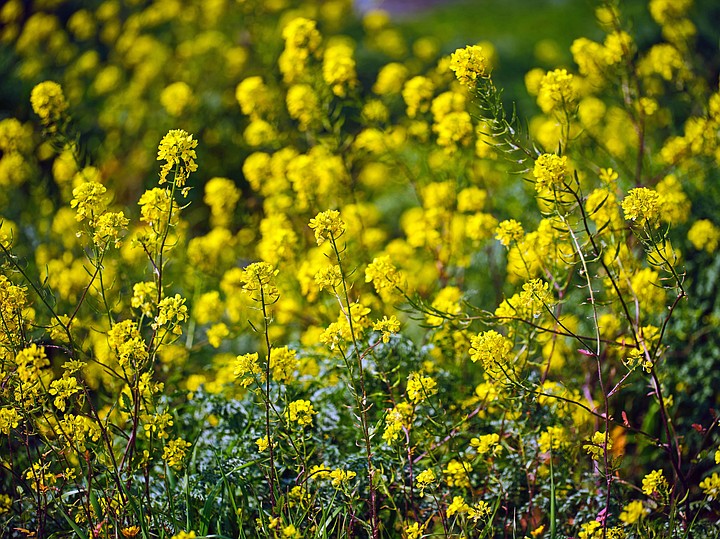 Facebook
Facebook
 X
X
 Instagram
Instagram
 TikTok
TikTok
 Youtube
Youtube

The Catalina Eddy, a meteorological condition responsible for days-long episodes of dreary, overcast weather over San Diego, is most likely to occur in May and June. This weather pattern, which intensifies our late-spring “June Gloom,” happens when moist marine air, drawn inland from the area around Santa Catalina Island, condenses in the form of low clouds along the Southern California coastline.

Chamise and Buckwheat, two of the most common native flowering plants in San Diego County’s sage-scrub and chaparral plant communities, are in flower this month through June. Chamise, also known as greasewood, readily sprouts from root crowns after a fire. Much of the area between the Laguna Mountains and El Cajon, swept by the mammoth Laguna Fire of 1970, is now smothered by chamise four to eight feet high and buckwheat two to three feet high. The stems of both chamise and buckwheat are tipped by clusters of small white or cream-colored flowers, fading to russet brown by July. Near the coast, look for flat-top buckwheat, common on south-facing slopes. Here, it shares space with other low-growing sage-scrub plants like black sage and California sagebrush.

Residual Moisture in the Ground left over from the wet winter season has delayed, for perhaps a month, the inevitable springtime “brownout” of San Diego’s coastal vegetation. The wild oats and foxtails have mostly turned gold, but other varieties of wild grass, such as rye, remain green in some areas. Yellow waves of wild mustard continue to put on a good show here and there, especially on the steep slopes and road cuts overlooking several of the freeways.


The Catalina Eddy, a meteorological condition responsible for days-long episodes of dreary, overcast weather over San Diego, is most likely to occur in May and June. This weather pattern, which intensifies our late-spring “June Gloom,” happens when moist marine air, drawn inland from the area around Santa Catalina Island, condenses in the form of low clouds along the Southern California coastline.

Chamise and Buckwheat, two of the most common native flowering plants in San Diego County’s sage-scrub and chaparral plant communities, are in flower this month through June. Chamise, also known as greasewood, readily sprouts from root crowns after a fire. Much of the area between the Laguna Mountains and El Cajon, swept by the mammoth Laguna Fire of 1970, is now smothered by chamise four to eight feet high and buckwheat two to three feet high. The stems of both chamise and buckwheat are tipped by clusters of small white or cream-colored flowers, fading to russet brown by July. Near the coast, look for flat-top buckwheat, common on south-facing slopes. Here, it shares space with other low-growing sage-scrub plants like black sage and California sagebrush.

Residual Moisture in the Ground left over from the wet winter season has delayed, for perhaps a month, the inevitable springtime “brownout” of San Diego’s coastal vegetation. The wild oats and foxtails have mostly turned gold, but other varieties of wild grass, such as rye, remain green in some areas. Yellow waves of wild mustard continue to put on a good show here and there, especially on the steep slopes and road cuts overlooking several of the freeways.
Comments